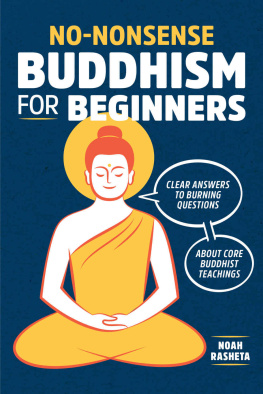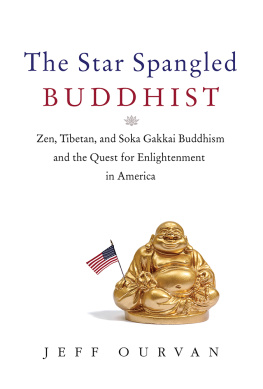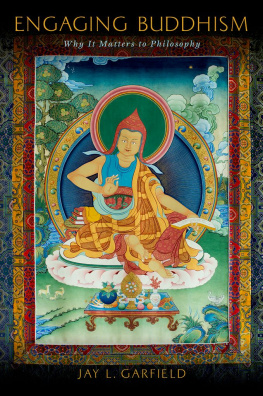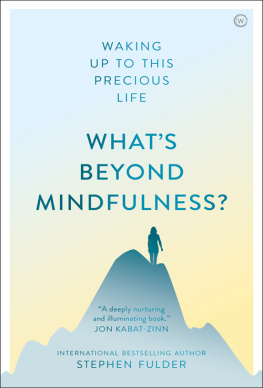Acknowledgments
This book has benefited from the support of so many people; I would like to thank them here. My advisers at the University of Chicago, Richard Shweder, Steven Collins, Tanya Luhrmann, and Richard Taub, have helped me to think and grow the ideas in this book through countless conversations and have been a great source of sustained intellectual encouragement through the years. Richard Shweder has helped me to think deeply about psychological diversity and the worth of leaving no assumption unquestioned in revealing the social construction of what counts as normal. In discussions ranging from the Buddhas hurt toe to the politics of female monk ordination, Steven Collins has helped me think about Buddhism as a living, moving mix of practices, as true when the Buddha was teaching as it is now. Tanya Luhrmann has helped me think carefully about the relationship between attention and thought in religious (and psychological) practice, and has reminded me how far good writing can go in sharing ideas and insights. Richard Taub, through institutional and personal backing, has helped me remember how much the support of mentors is crucial to success. In addition to these advisers I would like to also and especially thank George Robinson, who as my undergraduate adviser at Smith College believed in me and fostered the intellectual curiosity that made this book possible.
Friends in Chiang Mai enabled my writing of this book by housing me literally and intellectually during my years of passing through the city. These friends include Piyawit Moonkham, who first brought me to Mae Jaeng; Uthen Mahamid, who reminds me to think outside the box; Gaewgarn Fuangtong, my constant go-to English speaker and Bangkok-Chicago contact; Thongsuk Mongkhon, who shares his home with me when Im in town; Pussadee Nonthacumjane, who makes her library and classes at Chiang Mai University available for my use; and Aj. Somwang Kaewsufong, who is always available to help me with Thai Buddhist studies questions. They have all contributed to this work through their constant support, aiding in everything from figuring out the best motorbike helmet to buy, to digging up local histories of Northern Thai spirit cults.
I would also like to thank members of the various institutions I have been affiliated with and the granting agencies that have lent their support during the writing of this book. They include Katherine March at Cornell University, who introduced me to anthropological research years ago and has continued to be a great personal and professional mentor; Thak Chaloemtiarana and members of the Kahin Center Southeast Asian Studies Program, who provided a wonderful place to write; Thomas Csordas, Janis Jenkins, and the Anthropology Culture and Medicine Seminar at the University of California, who inspired me to think harder about cultural meanings and their connections to health; Tanya Luhrmann at Stanford University, who served as my Culture and Mind postdoc adviser; and Jocelyn Marrow, Jeanne Tsai, Hazel Markus, and the Psychology Departments Culture Co-Lab, who together pushed me to think further about the psychological implications of my research; the Cultural Anthropology with a Hint of Psychological Anthropology Reading Writing Group at Washington State University has similarly helped to improve the ideas and the writing in its final stages. The National Research Council of Thailand, the Fulbright Foundation, the Mellon Foundation, the Department of Comparative Human Development, the Committee on Southern Asian Studies, and the Institutional Review Board at the University of Chicago have all provided financial and institutional confidence at times when either or both were getting low. Peter Potter, Max Richman, Ange Romeo-Hall, and the whole editorial team at Cornell University Press have been a pleasure to work with from start to finish.
My parents Jackie and Joseph Cassaniti, my brother Jarret, and my sister Jocelyn have all been so incredibly supportive of the time and research that went into this book, reading drafts and offering suggestions throughout the long process of development to finished product. I really cant thank them enough. I would also like to thank friends and colleagues who have read sections or full manuscript drafts and have otherwise offered material and immaterial support for the work over the years: Jessica Auerbach, Jason Chung, Laura Darlington, Andrew Dicks, Rachel Dunn, Barb Dybwad, Nancy Eberhardt, Eli Elinoff, Rebecca Hall, Jacob Hickman, Jeff Holt, Jeannette Mageo, Tian-Tian Mayimin, Jessica McCauley, Justin McDaniel, Matthew Newsom, Brooke Schedneck, and Benjamin Smith. Bianca Dahl, Justin Van Elsberg, Scott Stonington, Emily Zeamer, and two anonymous reviewers have read through and helped to improve full manuscript drafts. Each of these friends has offered invaluable suggestions to the work as it has taken shape. Im extremely grateful to all of them.
Finally, I would like to thank especially the people of Mae Jaeng who are the subject of this book. It would not be here without the help of these friends, especially those I call Sen, Goy, Duansri, and their friends and families, along with my research assistant Ari Chuchuhnjitsakul. I have changed the names of those in Mae Jaeng to protect their privacy, and in doing so I cant adequately thank them here, but their kindness in opening up their lives to me has been an indelible part of my own journey.
Central Characters
Goys family
Goy: A thirty-three-year-old woman who owns a stationery store in Mae Jaeng
Mae Daeng: Goys fifty-six-year-old mother and my host mother, owner of a market stall
Ta: Goys twenty-four-year-old brother, unemployed
Gaews family and friends
Gaew: A thirty-year-old woman, whose family runs a general goods store in Mae Jaeng
Sen: Gaews thirty-two-year-old brother, and the subject of the books extended case study
Noi: Sen and Gaews eleven-year-old brother
Mae San: Their fifty-one-year-old mother
Paw Nui: Their fifty-five-year-old father
Pan: Gaews thirty-one-year-old husband
Chai: A twenty-nine-year-old man, owner of a medical clinic, and Sens close friend
Aung: A thirty-year-old woman, a pork vender at the market, and a friend of Gaew and Sen
Duansri: A thirty-two-year-old woman living in the nearby Karen Christian village of Ban Ko Tao
Julia: Thirty-one-year-old woman, anthropologist, and narrator of this book
. Selected place names and names of people described are pseudonyms. Some slight additional characteristics have been changed to ensure privacy, but the general area of Northern Thailand, the quotes, and relevant facts about the place and people are all true to life. Ages stated reflect ages at the beginning of extended fieldwork in 20056, three years after the authors first visit to Mae Jaeng in 2002 and two years before Sens hospitalization in 2007.










